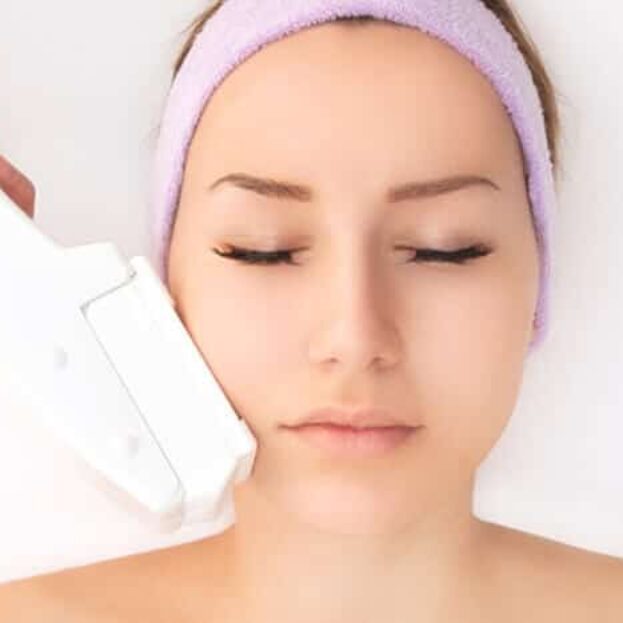Intense Pulsed Light (IPL) Therapy

Intense pulsed light (IPL) therapy was first developed in 1992 to treat leg telangiectasias. Its effectiveness was initially demonstrated in studies on rabbit ear veins, showcasing its ability to thermocoagulate vessels with minimized purpura and epidermal damage. This activity provides an in-depth review of the physics underlying IPL therapy, covering its indications, contraindications, and technical aspects of delivery. It emphasizes the pivotal role of the interprofessional healthcare team in administering IPL treatments, fostering a comprehensive understanding of this versatile technology’s applications. Since the FDA’s approval of the first IPL device in 1995, continuous innovation has expanded its clinical applications, making it a safe and effective option for various pigmented and vascular disorders, hair removal, and addressing signs of photoaging.
IPL devices stand out for their use of flashlamps and bandpass filters, enabling the generation of pulsed light with varying wavelengths, durations, and fluences. This versatility makes IPL an invaluable tool in dermatology, effectively treating conditions such as melasma, lentigines, telangiectasias, and rosacea. This activity underscores the significant advancements in IPL technology and its increasing affordability, highlighting its present status as a widely utilized modality in addressing both functional and cosmetic dermatological concerns. Learners will gain a comprehensive understanding of IPL therapy, empowering them to integrate this technology effectively into their clinical practice for enhanced patient outcomes.
Introduction
Intense pulsed light (IPL) therapy was first developed in 1992 by Doctors Goldman, Fitzpatrick, and Eckhouse for the treatment of leg telangiectasias. Proof-of-concept studies were conducted on rabbit ear veins, demonstrating IPL’s ability to thermocoagulate vessels while minimizing purpura and epidermal damage. Since the first United States Food and Drug Administration (FDA)-approved IPL device was brought to the market in 1995, this technology has undergone significant innovation and improvement in its clinical applications and affordability.
IPL devices are unique in that they employ flashlamps and bandpass filters to produce pulsed light of varying wavelengths, durations, and fluences. These characteristics provide IPL versatility in addressing numerous dermatological conditions. IPL is safe and effective in treating benign pigmented and vascular disorders as well as performing hair removal and reducing signs of photoaging. Currently, IPL is an invaluable tool in dermatology and is frequently used to address a broad range of functional and cosmetic concerns.
Physiology
IPL uses a flashlamp to emit polychromatic light across a broad wavelength spectrum of approximately 400 to 1400 nm, which makes it fundamentally different from a laser (light amplification by stimulated emission of radiation), whose light is necessarily monochromatic (of a single wavelength), collimated (with waves running in parallel), and coherent (with waves in phase).The advantage of broadband light is that it allows for greater versatility in treating a variety of skin types and conditions. Furthermore, the wavelength of light emitted from an IPL machine can be adjusted by applying filters that prevent the delivery of light with wavelengths shorter than the desired value . The result is that the desired wavelength is delivered along with longer wavelength light (such as infrared), but shorter wavelength light (such as ultraviolet) does not reach the patient.
Lasers and light energy delivery devices produce a clinical effect when their photons are absorbed by the skin, resulting in the deposition of thermal energy.Chromophores (eg, hemoglobin, water, melanin) in the skin absorb the photons and are subsequently heated, causing their destruction through thermocoagulation. This phenomenon of selective photothermolysis is the underlying basis of IPL technology.[9]
Indications
The FDA has approved IPL therapy for:
-
Telangiectasias
-
Photorejuvenation
-
Facial wrinkles
-
Hyperpigmentation
-
Lentigines
-
Ephelides
-
Melasma
-
Rosacea
-
Acne
-
Poikiloderma of Civatte
-
stains
-
Hemangiomas
-
Leg veins
-
Venous malformations
-
Removal of unwanted hair
Technique or Treatment
In contrast to lasers, IPL devices produce noncoherent, polychromatic light with a broad range of wavelengths. Their fluence, pulse duration, spot size, and filter wavelength can be adjusted in order to target specific chromophores. Thus, IPL devices can treat a wide variety of lesions and skin types. Lesion clearance often depends on the frequency of treatment sessions because the effect of pulsed light is cumulative, routinely requiring 3 to 6 treatments every 2 to 4 weeks for the full clinical effect to be achieved.
Lesions that are more heavily pigmented may require a higher number of treatment sessions. Lesions deeper within the dermis may also require more treatments as they are more challenging to reach. Compared with laser devices, IPL is associated with a shorter recovery time and lower equipment costs. Disadvantages of IPL include incorporating the lamp and cooling device into the handpiece, which contributes to device heaviness . Cold gel applied to the skin also diminishes the visibility of immediate local skin reactions.
Selection of the appropriate filter is critical to achieving the desired results, just as setting appropriate fluence and pulse duration is essential for avoiding complications. The default settings on most IPL devices are designed to provide safe treatments with minimal risk of complications, but using these cautious settings may prove less clinically effective than more aggressive energy delivery parameters . Starting a course of treatment with conservative settings, however, is advisable. Shorter wavelength filters permit less skin penetration than longer wavelength filters. Typical filter wavelengths and their indications
